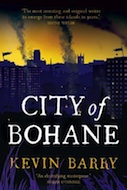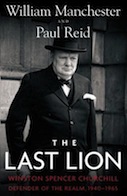Sarah Hall’s Booker-nominee How to Paint a Dead Man is brilliant, there’s really no other word for it. It’s also idiosyncratic like only great art can be, and is likely to be something of a love it or hate it novel.
 The novel intertwines the stories of four artists: Giorgio, a reclusive still life artist in 1960’s Italy; Peter, an iconoclastic landscape painter who was obsessed by Giorgio’s work in his youth; Susan, Peter’s daughter, a budding photographer; and, Annette, once a talented student of Giorgio’s, now struck blind at a young age. Hall skillfully employs a different narrative style for each story. Giorgio’s story unfolds in the first person through the translation of a journal kept during his final years. Annette and Peter’s stories are told through traditional third-person narration. Susan’s chapters provide the most-impressive stylistic pyrotechnics, as she is the surviving member of a set of twins, and consequently her story is told in the second person. The tone is of one who has been carrying on a conversation for years, and suddenly finds herself alone, but can’t stop holding up her side of the dialogue:
The novel intertwines the stories of four artists: Giorgio, a reclusive still life artist in 1960’s Italy; Peter, an iconoclastic landscape painter who was obsessed by Giorgio’s work in his youth; Susan, Peter’s daughter, a budding photographer; and, Annette, once a talented student of Giorgio’s, now struck blind at a young age. Hall skillfully employs a different narrative style for each story. Giorgio’s story unfolds in the first person through the translation of a journal kept during his final years. Annette and Peter’s stories are told through traditional third-person narration. Susan’s chapters provide the most-impressive stylistic pyrotechnics, as she is the surviving member of a set of twins, and consequently her story is told in the second person. The tone is of one who has been carrying on a conversation for years, and suddenly finds herself alone, but can’t stop holding up her side of the dialogue:
“You aren’t feeling like yourself. You haven’t been feeling like yourself for a while now, not since the accident. More accurately, not since the moment you heard about it. That morning, that minute, holding the phone to your ear and hearing your father say those horrific words; it was then you felt the change, then when you were knocked out of kilter.”
The connecting themes of the narrative stands is how to live as an artist, how to combine your passion and move in the contemporary world, how to combine your inner vision with the often hostile or opposing realities of the outside world. For the non-artist reader, this is of course a metaphor for the oldest theme in literature: how to be, how to move through the world. Giorgio has lived through the fascist years, has seen art twisted to meet the demands of the state and nonconformists punished and killed. His reaction was to reject society and live simply in order to learn to see things as they truly are and, through repetition and practice, capture this on canvas. His subject matter over the decades was a series of still-lives of blue bottles and other household objects. Critics have come to be as interested in his privacy as in his seemingly simple art. Giorgio, however, is not a stereotypical recluse, rejecting or overwhelmed by the modern world; instead, he has always been interested in and aware of the changing tides of politics, art and fashion. However, to him they are secondary to the development of his sight, his perspective, his artistic vision:
“Often I tell visitors, who come and who sit uncomfortably in their city garments, to be heedless of the train timetables. I invite them to remain past the hour of their appointment, to take some wine and sit outside and relax. Take your hand from your wrist, I tell them. Listen to this greater pulse, to the lowing of cattle and the beating of wings against the winds.”
Naturally, his wisdom and truth is rarely theirs, and few truly understand what he’s attempting to say.
One who would have understood, had they ever met, is Peter. As an idealistic young artist in the 1960s, Peter writes to Giorgio about his art, and Giorgio recognizes a kindred spirit. Peter walks the path of any self-conscious artist of the time, living the hippie experience to the full, traveling, experimenting with drugs, before settling down in a loving marriage, moving to a remote part of the north of England and devoting himself to landscape painting. Like Giorgio, Peter rejects the pre-packaged comforts of the consumer society in order to expand his own vision, his personal understanding of the world through art.

Sarah Hall, author of How to Paint a Dead Man
To me, Peter and Giorgio are interesting, wise and very appealing characters, but both somewhat archetypal: the artist as reclusive visionary – and that’s how I think Sarah Hall intends them to be seen. The most interesting characters and storylines are in the paths taken by the offspring of these artists: Peter’s children Susan and Danny, and Giorgio’s student Annette.
Danny and Susan grow up in very permissive surroundings; there are no boundaries, no rules and no polite lies for the sake of social conformity. To Danny, this is heaven. He is the life and soul of the party, an incredibly open, trusting and indulgent personality. For him, the question is, having seen how his parents have combined art and life so openly, honestly and successfully, how can he ever leave the fold and go out into the world? Ultimately, he cannot; he is a child who never grows up. Though he becomes a “found” artist, making sculptures out of scrap metal and the detritus of life, his real talent is for living, for friendship. When a road accident takes his life at a young age, hundreds come to his funeral. In the most basic sense, his way of life is his art. It can be argued, or course, that his art is never very deep or meaningful because he doesn’t go through any process of coming to understand what he’s trying to achieve, he doesn’t struggle with the question of what he wants to be, of why he’s an artist. He simply copies the aspects of his father’s unconventional lifestyle that appeal to him and has fun.
The question of reconciling life and art is a very real one for me – and probably for anyone likely to be drawn to this novel. Danny reminds me strongly of my own brother, a musician and artist who has chosen to live simply on his own terms in order to pursue his projects. He may not be famous, but I think he’s very successful in terms of what he sets out to do. In contrast, though I studied writing and film-making, I was far less single-minded. Ultimately I put my faith in something other than art.
Susan is much more worldly than Danny, although, like him, she doesn’t have a strong concept of her art. She’s a competent photographer, but conscious that she gets attention as much for being her famous father’s daughter as for her work’s merit. She’s dully aware of this, but it doesn’t become an issue until her brother dies, and all her certainties and complacent attitudes towards life die with him. She embarks on a self-destructive affair as a means of distraction from the pain of separation. Fundamentally, she has nobody to talk to, because Danny was always the one who knew her best, the one whose approval she sought. Her faith wasn’t in the power of art to get her through life, it was in the certainty of Danny’s presence and approval, and she’s utterly unmoored when he dies.
Back in the 1960s, Annette is a high-school student whose talent Giorgio thinks highly of before she loses her eyesight. Afterwards, her horizons narrow to the confines of her mother’s fearful Catholicism and the familiar geography of her family’s house and the market where she works. Her mother is another recluse, a fearful woman convinced the devil, which she calls the Bestia, is out to destroy her, and consequently never leaves the house. Annette’s challenge is whether to internalize her mother’s fear and accept a constrained life after she goes blind, or embrace life, continue living in hope and working in the market despite the chance that people might take advantage of her lack of sight.
I find it interesting that some reviewers have omitted Annette from the company of artists struggling to build a life in this novel, or simply skipped over her story in their reviews. She’s a naïve teenager, struggling to reconcile a rather negative religious view of the world with her innate optimism, and the sense of joy, hope and redemption she finds in Christianity. The implicit parallels Hall appears to draw between artistic expression (the faith that a commitment to art as a way of life will see you through) and religious faith (the process of determining the balance point between one’s faith and one’s life) are subtle and not often raised. Should Annette become a nun, as her mother suggests, because the world is too dangerous for a young, blind woman? Should she find a way to live as normal a life as she can, trusting in a just and protective god, or stay at home fearing the ill intentions of the Bestia? [*Blogger KevinfromCanada makes the interesting point that Annette’s artistic endeavor is literally developing her inner vision.]
Annette greets life on her terms, in that sense her story parallels Danny’s, who greets life openly and “follows his bliss.” His choice of found art reflects this laissez-faire attitude, and contrasts with Peter and Giorgio, who go through years of searching and questioning before arriving at their respective understanding of their art.
Ultimately, it’s Susan’s story that opens and closes the book. The question is what can she find to replace Danny as the rock upon which she rebuilds her life? Like her father and Giorgio, she must come to terms with life and art, where one ends and the other begins. What sacrifices will she make to follow her path? The resolution may disappoint some readers because a) it’s something that happens to her, rather than something she chooses consciously, and b) it’s slightly ambiguous. I found it completely believable and very fitting. Again, this is probably due to the circumstances of my life and my choices; I fell in love and got married young (at least by the standards of my peers). So, in a sense, I placed my trust in love, not art. Across time, and without ever being aware of them, Susan comes to trust Giorgio’s words of wisdom, offered decades earlier: “If everything seems lost, I tell them, trust the heart.” I completely understood Susan’s feelings and the ending felt natural and justified. One could interpret the conclusion in terms of the parallels between art and religion explored in Annette’s story, but I can’t really go there without giving too much away.
 Suffice to say, How to Paint a Dead Man is a beautiful, heartfelt novel. Sarah Hall displays a technical virtuosity and narrative skill that wows you with her words, while her deft weaving of the various stories allows the bigger picture meditation on the difficulties of where to draw the line between art and life – more simply between work and home – to unfold naturally. Each storyline exists at its own time and place, but each episode subtly enriches the events of the last and highlights different choices, different priorities, and different outcomes. It all boils down to a rich and perceptive meditation on the choices, accommodations and decisions we make in shaping a life, and is a joyful celebration of the pursuit of art, in whatever form one may choose.
Suffice to say, How to Paint a Dead Man is a beautiful, heartfelt novel. Sarah Hall displays a technical virtuosity and narrative skill that wows you with her words, while her deft weaving of the various stories allows the bigger picture meditation on the difficulties of where to draw the line between art and life – more simply between work and home – to unfold naturally. Each storyline exists at its own time and place, but each episode subtly enriches the events of the last and highlights different choices, different priorities, and different outcomes. It all boils down to a rich and perceptive meditation on the choices, accommodations and decisions we make in shaping a life, and is a joyful celebration of the pursuit of art, in whatever form one may choose.
Links
Sarah Hall on How to Paint a Dead Man
Participate in the roundtable on How to Paint a Dead Man at Ed Champion’s Reluctant Habits blog
Natalie Sandison’s review in The London Times
One of the many websites of my brother, Stephen Rennicks, conceptual artist.







4 comments
Comments feed for this article
September 2, 2009 at 12:53 pm
Suejustbooks
I loved this review and can’t wait to read the book! I don’t think it’s released until September 8, but I’ve already ordered it. Is this your favorite book on this year’s Booker Prize long list so far?
September 2, 2009 at 1:21 pm
Rich
So far, yes.
I enjoyed Fould’s Quickening Maze, but it didn’t set my mind racing like How to Paint a Dead Man. Toibin’s Brooklyn is good, but very restrained and seems a bit flat after Sarah Hall. Enjoying Mantel’s Wolf Hall, but don’t know that there’s more than just a big historical romp to it. (Of course, it this was the Oscars, the big, worthy historical pic often wins…)
Hopefully I’ll get through a couple more before the winner is announced.
September 2, 2009 at 11:13 pm
Twitter Trackbacks for If Everything Seems Lost… Trust the Heart. « The Word Hoarder [wordhoarder.wordpress.com] on Topsy.com
[…] If Everything Seems Lost… Trust the Heart. « The Word Hoarder wordhoarder.wordpress.com/2009/09/02/if-everything-seems-lost-trust-the-heart – view page – cached Father, bookseller, gardener, writer, jack-of-many-trades — From the page […]
September 21, 2009 at 1:54 pm
An Interview with Rich Rennicks: Father, Bookseller, Gardener, Writer, Jack-of-Many-Trades « Follow The Reader
[…] RR: Sarah Hall’s new novel How to Paint a Dead Man is frankly amazing: it contrasts the stories of several artists and their attempts to reconcile the demands of their art with the requirements of family life and strictures of social normality. I reviewed it at length on my blog recently. […]